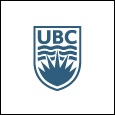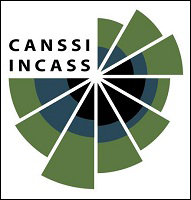About the Joint Seminar
The UBC/SFU Joint Statistical Seminar is jointly hosted by the graduate students of the UBC Department of Statistics and the SFU Department of Statistics and Actuarial Science at a central location in Vancouver. The Winter 2019 seminar is the second of two seminars taking place in the 2019/2020 academic year. The event offers Statistics and Actuarial Science graduate students an opportunity to attend seminars with accessible talks about active research areas in the field and provides an opportunity to network with their peers and a guest faculty member. The Fall 2019 seminar is organized by graduate students from SFU, and the Winter 2019 seminar is organized by graduate students from UBC.
The Winter 2019 seminar includes talks given by six students (three from UBC and three from SFU) and one faculty member from UBC. Breakfast and lunch are provided to seminar participants.
Attendee survey
For those who attend the seminar, please complete this survey at the end of the seminar. Aggregated survey responses will be used in funding applications and the improvement of future seminars.
Schedule
Date: Saturday, February 29th 2020
Location: SFU Harbour Centre, Room 1600
| Time | Event |
|---|---|
| 8:00am - 8:50am |
Breakfast @ Blenz Coffee at Hastings and Richard |
| 9:00am - 9:25am |
Alexi Rodríguez-Arelis, UBC How to Improve Prediction Accuracy in the Analysis of Computer Experiments? The Exploitation of Dimensional Analysis Dimensional analysis (DA) pays attention to fundamental physical dimensions when modelling scientific and engineering systems. It goes back at least a century to Buckingham (1914), but the methodology has recently caught the attention of statisticians for computer experiments modelling (Shen et al., 2014; Shen and Lin, 2018; Shen et al., 2018). The basic idea is to build models in terms of dimensionless quantities derived from the original variables, and possibly design for them too. With the "right" variables, prediction accuracy will hopefully improve. While these goals make much sense for scientific applications and statistical modelling, implementation of DA is far from straightforward; choosing the derived quantities is particularly problematic. An applied approach to finding "good" derived variables in computer experiments will be described in this presentation. |
| 9:30am - 9:55am |
Nikola Surjanovic, SFU A Generalized Hosmer-Lemeshow Goodness-of-Fit Test for a Family of Generalized Linear Models Generalized linear models (GLMs) are used within a vast number of application domains. However, formal goodness-of-fit (GOF) tests for the overall fit of the model—so-called “global” tests—seem to be in wide use only for certain classes of GLMs. We develop and apply a new global GOF test, similar to the well-known and commonly used Hosmer-Lemeshow test, that can be used with a wide variety of GLMs, including those containing continuous covariates. Our new test is relatively straightforward to implement and interpret. We compare the performance of our new test with other global GOF tests for GLMs, finding that our test provides competitive or comparable power. Our test also avoids the use of kernel-based estimators, thereby avoiding the issue of bandwidth selection, and a bootstrap procedure for the calculation of a p-value is also not necessary. We find that performing our test is computationally efficient. |
| 10:00am - 10:25am |
Ian Murphy, UBC Non-linear Mixed Effects Models for Pharmacokinetic Processes The field of personalized medicine is extremely popular right now. A major factor in personalized medicine is having customized dosage of medications, tailored specifically for the patient. The field of pharmacokinetics studies how drugs move around the human body, which allows doctors to understand exactly how medications are absorbed, distributed, metabolized, and excreted. In this talk, I will discuss what pharmacokinetics is, and how it can be used to further understand drug dosing regiments. Non-linear mixed effects models will be highlighted as the preferred statistical model which can be used to model drug concentrations in a patient’s blood. These models allow for between-individual differences as well as within-individual differences. Moreover, by utilizing these models, more personalized dosing regiments can be developed to help physicians make better decisions for their patients. |
| 10:30am - 10:55am |
Barinder Thind, SFU Functional Neural Networks We introduce a methodology for integrating functional data into feed-forward neural networks - i.e. when the initial activations of the network are functions. The model is defined for scalar responses with at least one functional covariate and some number of scalar covariates. The results of the approach demonstrate potential to circumvent the usually uninterpretable nature of machine learning methods. The model is shown to perform well in a number of contexts including prediction and recovery of the true underlying coefficient function; these results were confirmed through cross-validations and simulation studies. |
| 11:00am - 11:25am |
Pramoda Sachinthana Jayasinghe, UBC Developing New Statistical Pattern Recognition and System Identification Techniques for Partial Discharge Analysis Partial discharge (PD) in power transmission systems can be harmful to insulators, the equipment that they are connected to and in the long run, can also lead to more dangerous outcomes. Therefore, identifying partial discharges at an earlier stage is important. Our aim of this analysis is to develop a methodology to identify the system that caused a partial discharge. In this study, we analyze the input and output signals to a partial discharge source in an experimental setting. We propose using an orthogonal expansion approach based on Laguerre functions to first approximate each signal. Then using properties of Laguerre polynomials and deconvolution theory, we were able to obtain a recursive formula that can be used to get a mathematical expression for the system. The characteristics of the system then can be used for the purpose of classifying the signals to their respective sources. |
| 11:30am - 11:55am |
Nate Sandholtz, SFU The Human Acquisition Function We explore how well classical Bayesian optimization (BO) acquisition functions can explain human exploration-exploitation decision behavior. Data was collected on human decisions in a search task designed to force subjects to balance exploration and exploitation in their strategy. Using the acquisition functions commonly employed in the BO literature, we solve the inverse problem for this task, estimating each subject's latent acquisition preferences based on the noisy optimization data we observed. We examine the fits to diagnose the differences and guide the construction of a better model. We find that the classical acquisitions functions are lacking and we propose a better model to explain human behavior in this search task. |
| 12:00pm - 12:50pm |
Guest speaker: Professor Benjamin Bloem-Reddy, UBC Explore or exploit? Doing research in grad school and beyond |
| 1:00pm - 2:00pm |
Lunch @ SFU Harbour Centre |
Sponsors
This event is supported with the great help from our sponsors:

